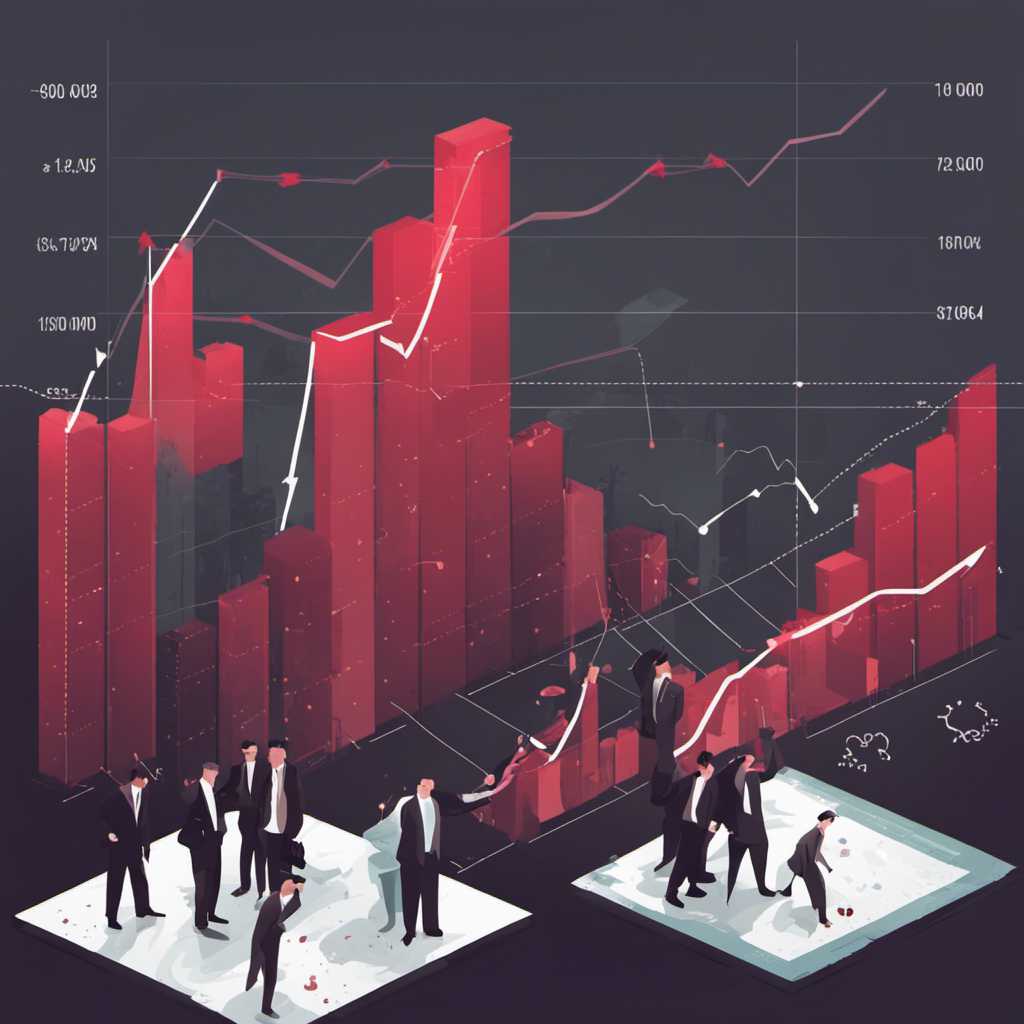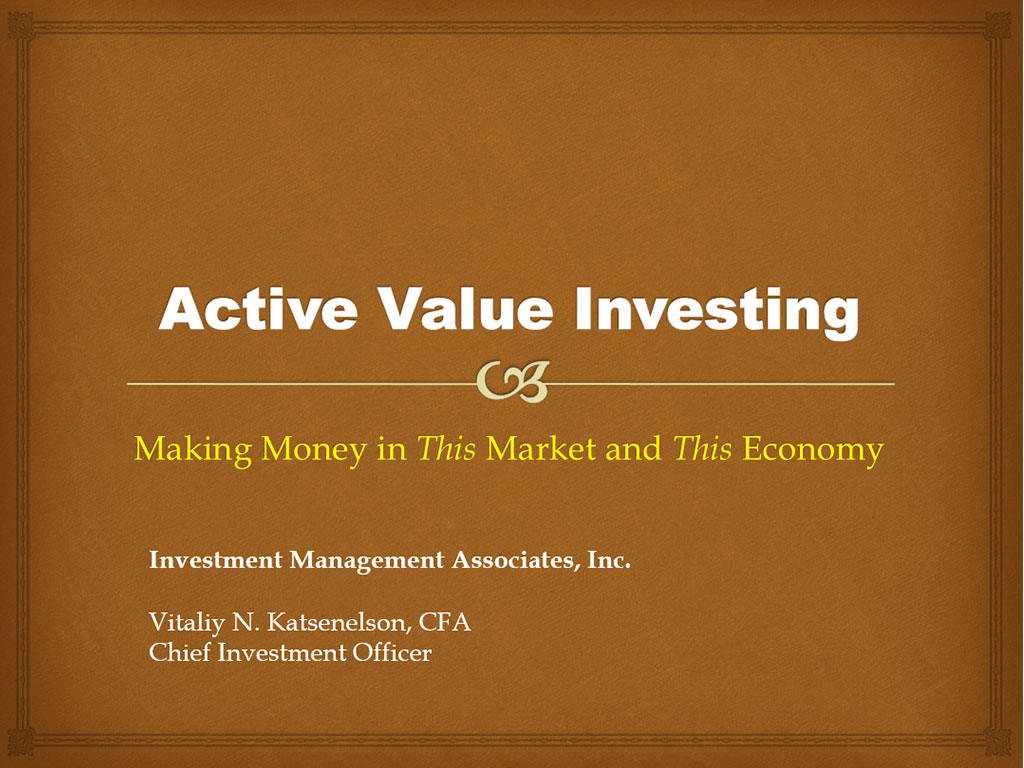I find January to be one of the most difficult months for long-term investors. In the spirit of the fine American tradition of making New Year’s resolutions, we feel a need to make a resolution for the stock market (as if it will listen to us) in the form of a prediction.
I don’t dismiss the benefits of forecasting, but we should forecast what we can forecast – market timing is not it. We just listen to our gut (which for all I care could be influenced by the fat content of food consumed at the time of the prediction) and verbalize it in well structured sentences that give our fortune telling much needed sophistication.
Though some do a great job playing market timers on business TV, with the assistance of sound horns and theatrical Oscar-like performances, the advice granted is not worth the damage to your ears or eyes. Timing short-term markets is a loser’s game. Let’s be honest with ourselves – we really don’t know.
The problem with forecasting short-term market movements is that even if you get the economic event right and Lady Luck kisses you on the cheek and you nail its timing, the market may just spit in your direction and chose to ignore it till a later date. Last summer, for example, the housing bubble finally burst, bringing the toxic waste (sub-prime) loans onto the surface. Credit markets froze… and you’d think the stock market would decline? No, the Dow went on to make an all time high, hitting 14,000 and ignoring the problems for months.
Let’s leave the market timing to the media, take a drink of cold water and approach forecasting the right way. Even a long-term investor has to recognize that long-term consists of a series of short-terms. The tsunami of short-term events may change the direction of the long-term. We have to accept that we probably won’t get the timing right, adopt an “I’d rather be vaguely right than precisely wrong” attitude, focus on identifying shorter-term risks that may stand between us and the long-term, and stress test our portfolio for them accordingly.
It would be careless to dismiss the possibility of a recession (some argue that we already are in a recession). Past recessions were caused by excesses of inventory and overcapacity in the corporate sector. As corporations rationalized their inventories and factories, higher unemployment followed – we were in a recession. Excesses were worked out, corporations started to hire, and voila – we were out of the recession.
This time around the seeds of the recession were planted by the consumer, the mighty force responsible for two thirds of the US GDP. Betting against the US consumer was a losing bet; time after time they’ve pulled us from the edge of recession, putting the economy back on the growth track. You could knock the consumer down, but he always got up. (I’d be careful using the argument “it never happened in the past, it will not happen in the future”; US housing prices had not declined nationwide in recent history, until they did in 2007).
Consumers are exhausted from relentlessly carrying the US economy on their backs through good and bad times, but thanks to low interest rates and promiscuous lending standards that helped to create the housing bubble, consumers are also heavily leveraged.
Median wage growth has been lagging economic growth, and consumers have responded by spending their wealth – borrowing against it. If consumers’ household debt had continued to grow during the 2000s at the same (low) rate it did in the 90s, spending would have been several trillion lower (this is th excess that needs to be workout this time around). Today their biggest asset, the house, the source of confidence and cheap financing, is on a decline. Consumer’s are in debt up to their ears – as a percent of GDP, it has ballooned from 68% of GDP in 2000 to close to 100% today. Despite lower interest rates, household debt burden (percent of our discretionary income that went on interest and principal payments) went up 16% from 12.3% from 2000 to 14.3% in 2007.
To put a cherry on this less than pretty cake, the financial system, the oil on the wheels of capitalism, is strained. As falling dominos, escalating defaults from housing and consumer loans, which appear to be spreading beyond the sub-prime, have triggered a chain reaction in defaults and downgrades in complex, opaque, leveraged but highly rated at the time (not anymore) collateralized securities. Many of these securities were also insured by mono-line insurers such as MBIA and Ambac, and thus insurers are teetering on the edge of the very high possibility of going under (though rating agencies maintain their view that MBIA and Ambac are highly rated, their respective debt is traded as if it was junk). Thus credit problems stemming from defaults have the possibility of reaching levels that we have not seen before, already being supplemented by the loss of trust in rating agencies and a crisis of confidence in financial markets.
The Federal Reserve and politicians are “coming to the rescue” with rates cuts and tax rebates, and they may bail out the economy this time around. But there is a very real risk that these actions will only postpone the inevitable (a recession) but won’t cure it. Also, the Fed’s intervention by lowering rates may create bubbles in other asset classes, as it did in the housing sector after the post-2001 rate cuts. A series of questions come to mind: Will the weak dollar bail us out? Can we export ourselves out of a recession? Are we decoupled enough from the rest of the world that our trading partners will keep on ticking with no decrease in demand for our goods?
The answers to these questions will be only apparent with the benefit of hindsight. My gut tells me that the answers to all of them is “no”, but then I just I had a soy milk frappuccino. It is certain that our financial systems are more interconnected now (not less) than ever before. The near collapse of large German and British banks, and the August 2007 liquidity crisis in Russia (the country that is swimming in petro dollar revenues) were all brought on by the sub-prime mess in the US.
So here are my predictions, with the qualifier that while they may or may not play out, it is better to be prepared than surprised:
- The US economy will slip into a recession which will last longer than those of the past. The longer this recession lasts – the longer it will last. Economic weakness will feed on itself and cause higher unemployment, which will cause further defaults on loans, and so on.
- The defaults in the financial sector will reach higher levels than we saw in the last recession.
- Lending standards will go from extreme promiscuity to the level of a store manager in the sitcom Married with Children, when a store manager, tired of Al Bundy’s bounced checks, asked him for “cash and three forms of ID”.
- This will also spill over into corporate sector. In many instances it already has: access to capital markets has of late been considered a birthright, but it is quickly turning into a privilege reserved for elite few and, in many, cases a source of competitive advantage
- Oversupply of houses and tighter lending standards will cause the housing market to recover slower than many expect (or are hoping).
- Worst case, we will take the rest of the world into a recession. Slowdown in growth will send the Chinese economy into deflationary spiral. We’ll learn that the prosperity of the Chinese economy came at the expense of a pile of bad loans which were covered up by high growth. Exposure to BRIC countries that used to be considered an asset may quickly turn into a liability. The global commodity boom will turn into a bust.
- Finally, corporate profit margins will prove unsustainable. They are at all time high (40% above the mean), soon to embark on the journey toward mean reversion, where corporate earnings will either decline or growth will decelerate. Stock may not appear so cheap anymore.Some of these scenarios are possible; a lot of them are probable. The economy (and especially the global economy) is too complex, with too many forces working against each other. Their sequence, timing, the weight of the impact, the unintended consequences… all is impossible to predict, though economists will try. Yogi Berra said “It is hard to make predictions, especially about the future”, and he is so right. I don’t know, nor does anyone else. But identifying very possible risks is a very important part of money management, so they must be hypothetically considered.
Times like these always appear bleak, and the light at the end of the tunnel is far and dreary, but our economy has survived many crises before and should survive this one, too. It is impossible to judge how far away the end of the tunnel is, but in this environment owning high quality companies that are not dependent on outside financing is crucial. Stress test your portfolio for exposure to expansion of the global economy. Cyclical (capital goods) and commodity driven stocks come to mind here. Make sure that companies in your portfolio are not about to see their margins (and thus profits) decline. Of course, ridding your portfolio of all risk is impossible, but it can be reduced.









0 comments